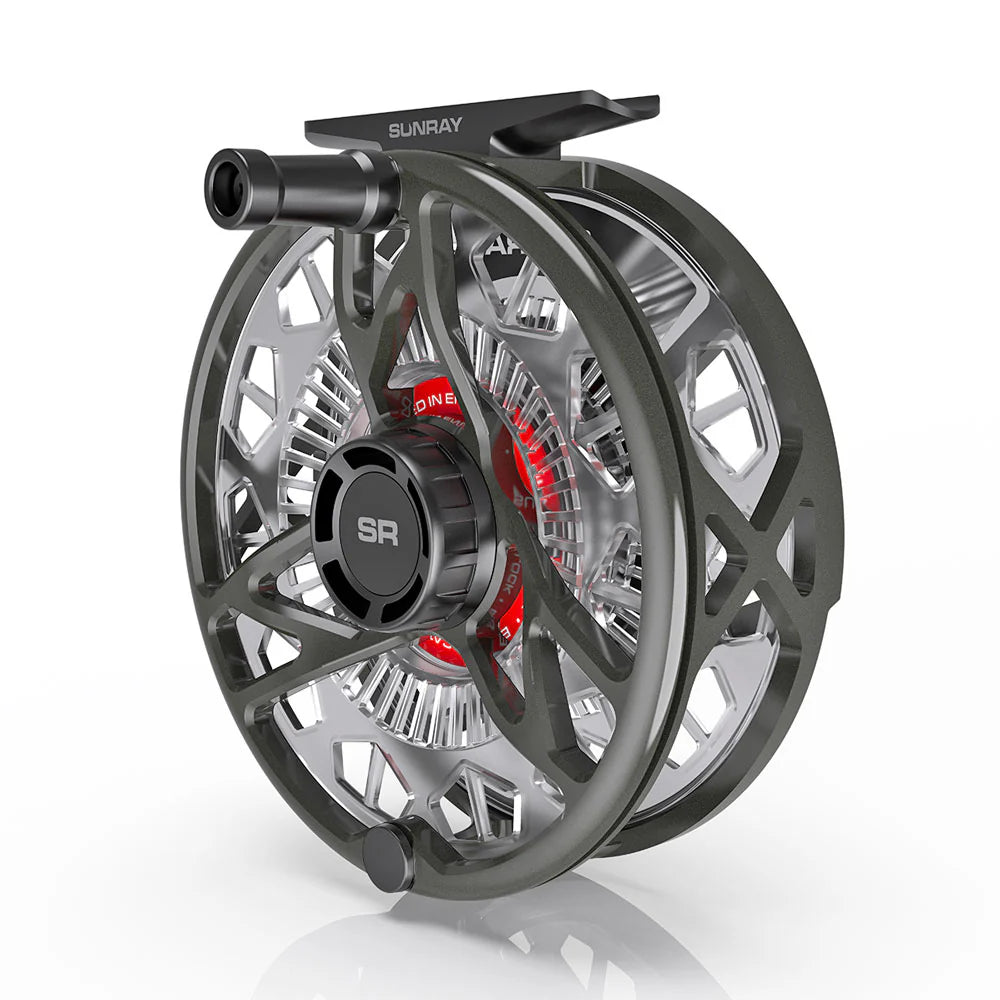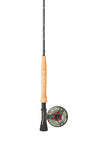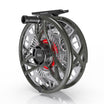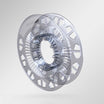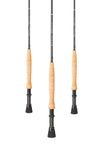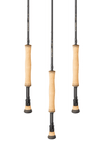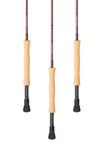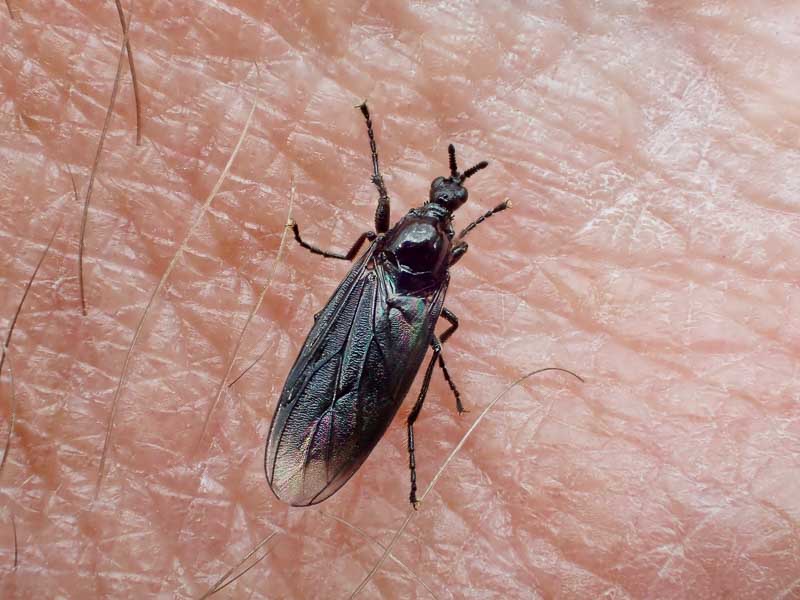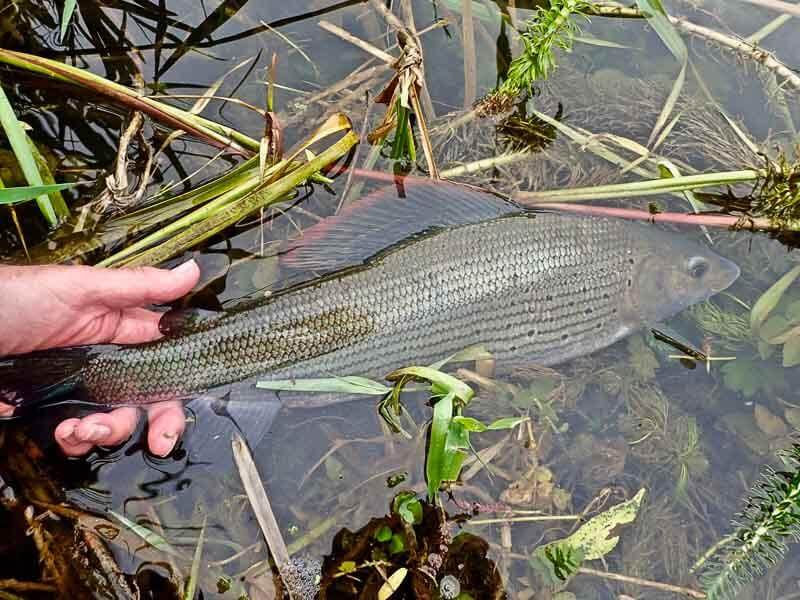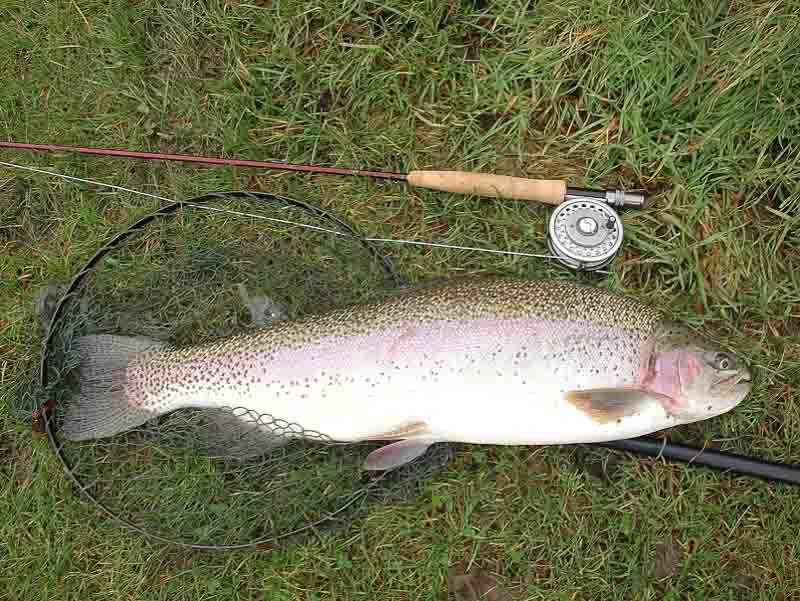by Dave Southall
When I first started fly fishing I’d arrive at the river or Lake early in the morning & fish till dusk. Furthermore, on my arrival I’d immediately start fishing, believing that unless my fly was in the water there was no chance of catching a fish. My fishing was mechanical & without much thought in those long gone days: I followed the recipes for success that I read in the fishing literature without any real understanding of what I was doing or why I was doing it. Nowadays, in my old age, I fish much shorter hours, usually no more than 4 hour sessions & even whilst at the river or lake I spend much of my time watching & waiting for signs that will tell me what to do. I love my friend Stuart Croft’s sayings, “ You’ve got to let the river invite you in & let nature tell you what to do”.
Many years of experience have taught me when best to time my visits & what tactics to adopt to hopefully optimize my chances of catching the trout & grayling that are my usual quarry. I don’t always get it right but I certainly reduce the odds against failure. So let’s consider a few examples starting at the beginning of the trout season.
- Early April (& late March on those Yorkshire rivers where the season opens on the 25th of March) I expect hatches of large dark olives & small stoneflies. These rarely start before 11am & usually cease around mid-afternoon. The best surface activity to emerging LDOs is usually on dull, cool, damp days, as on such days the emerging duns take much longer to inflate their wings & gather enough energy to take to the air. As a result they drift helplessly down the river, easy prey to the trout. One of my most memorable days of dry fly fishing in April was on the Yorkshire Derwent on a cold (4 degrees C) day when sleet turned to snow & the fish went mad on a good hatch of LDOs. On sunny, warm, breezy days the olive duns soon lift off the river surface & the only vulnerable stages are the nymphs or the few failed emergers. Since I prefer dry fly fishing, particularly after a winter mainly fishing wet flies for grayling, it is the dull days after 11am that I choose to go fishing in the early season. However the stoneflies are more active on sunny days but since I usually see fewer of of them than than the olives on sunny days nymphing is generally more productive than the dry fly.
- Grannom sedges are another early season fly on some waters & they emerge in pulses during the day, particularly late mornings. On rivers where they are plentiful it is worth being at the river by about 10am with a suitable pupa pattern & possibly a dry pattern. In the afternoon you may see vast numbers flying upstream but few on the water & few rising fish. Then later the females may well be seen crawling down below the river surface to egg-lay & a submerged (bead-head) imitation of the adult is worth a try.

- Grannom sedge
- Late April & early May marks the arrival of the hawthorn flies & black gnats, although their numbers can vary dramatically from year to year. These two terrestrial insects are most active during warm, sunny weather. On breezy days they can be seen swarming behind the shelter of bankside trees & many get blown onto the water. 10am is usually early enough to be at the river & I look for tree-lined areas on the windward side of the river.

- Hawthorn Fly

3. Black Gnat
- Some years early May is a great time for aphids. 2019 was an exceptional aphid year through out May & June, at which time I fished virtually exclusively with size 26 to 30 CdC dry flies. Warm, windy days are often the best as the wingless generation of aphids get dislodged from the trees overhanging the river. I well remember one day a few years ago when it was so windy that leaves & even quite large branches were being torn off the alder trees overhanging Pickering Beck on the southern edge of the North Yorks Moors. Despite a river heavily coloured by the overnight storms trout were rising to the abundant aphids amongst the floating debris & I caught a good number of fish on a short shank size 24 CdC IOBO Humpy.
- On my local chalk stream, Driffield Beck, mid-May marks the start of the Agapetus fuscipes sedge emergence. The pupae (or to be precise the pharate adults) of this tiny (5mm long) caddis/sedge species swim to the river surface then swim to the bankside where they climb out & only there do they transpose into adults. Early afternoon is the usual time when the trout can become totally preoccupied chasing the pupae, often ignoring masses of black gnats or olives littering the river surface.

- Agapetus adult

5. Agapetus pupae
- Late May/early June is the mayfly (Ephemera danica) season on some of my local rivers on the North Yorks Moors. Although a sprinkling of the big duns may start emerging in the morning it is usually not until around 2pm or later that the hatch really starts & it will continue into the evening, at which time if the conditions are favourable (mild & not too windy) the spinners will dance, mate, egg-lay & finally spent spinners will litter the river surface. In early June 2019 the Pickering Beck trout were totally preoccupied with aphids until late afternoon when they started to feed on the emerging mayflies.

- E. danica dun

7. E. danica spent spinner
- Mid-summer is a time of year when much depends on the rivers (& lakes) that you fish. On the heavily wooded small streams that I fish on the edges of the North Yorks Moors the middle of the day on a hot, sunny day can be the best time to fish, particularly if it is windy. Terrestrials (beetles, wood ants, caterpillars, alder sawfly larvae, etc.) make up a big portion of the trout diet on these streams. Warmth is required to get the terrestrials active & if it is windy they often get dislodged from the overhanging trees & are blown onto the water. In 2019 it was noticeable on both the Driffield Beck chalk stream & during a visit I made to the River Itchen that 11am till 2pm was the time slot when the trout were most active, surface feeding on small olives & other insects, whilst outside of this time slot there was little activity. The same was true in late summer on Foston Beck, another chalk stream, in East Yorkshire. Driffield Beck where I regularly fish is always a good bet in the middle of the day in summer & the Agapetus emergence mentioned earlier continues throughout the summer months, whilst there are always a few larger caddis about & daytime hatches of pale wateries. Late evenings are a time when fish activity can be expected on most summer rivers, particularly the big spate streams where hatches of blue-winged olives occur as the light levels fall, followed on suitably calm evenings by spinner falls, plus hatches of a number of caddis/sedge species.
- Autumn (late October & November) is often another time of the year when aphids can become a staple diet of trout & grayling during leaf-fall. Windy days on tree-lined rivers can provide outstanding sport. I experienced just such conditions on the Yorkshire Colne in November 2018 when the grayling went berserk feeding on dislodged aphids & a size 30 CdC dry fly proved to be irresistible.
- Winter is an unpredictable time of year, but I generally find that the best grayling fishing is from late morning till late afternoon. On dull days don’t discount dry fly fishing: in January & February of 2019 I had some amazing sport on an industrial Yorkshire river fishing size 30 CdC dry flies to grayling that were rising throughout the afternoons to tiny midges. In the depths of winter on my local small still water, Wansford Lake, the best midge hatches are on dull days, even when it is frosty & some of my best dry fly fishing there has been when it has been snowing & the emerging midges were unable to take to the air.

- Chironomid Midges in spider’s web
Once at the water at what should be the optimum time of day & year for a particular hatch or fall of insects or when conditions are right in some other way it is then sensible to spend some time watching the river or lake. Whilst there are general trends that help us to predict what might happen, such as a hatch of Large Dark Olives around midday in April, there is no guarantee that this will happen: nature is not totally predictable. Many times I have gone to the river with a preconceived game plan only to find that I have had to drastically change my game. Time spent watching what is happening is never wasted. Check out what foods are vulnerable by looking at what is hatching, what insects are in flight & what is trapped in spiders webs (be aware that insects that have aquatic larvae & that those that are in flight or trapped in webs will have emerged earlier, so look for ones that are still alive). Carefully watch the rises of fish; gentle rises suggest something relatively inert is being preyed upon (aphids or other terrestrials trapped in the surface film, spent blue-winged olive spinners, midge pupae prior to emergence, etc.); vigorous rises suggest something that might escape is being predated (sedge pupae swimming in or just below the surface, olive duns about to take off, small fish, corixas, etc.). It is always worth sieving the surface with a fine mesh net to see what is available & check out the bankside vegetation for tiny 5mm long Agapetus adults. “LET NATURE TELL YOU WHAT TO DO!!!!!!”.


